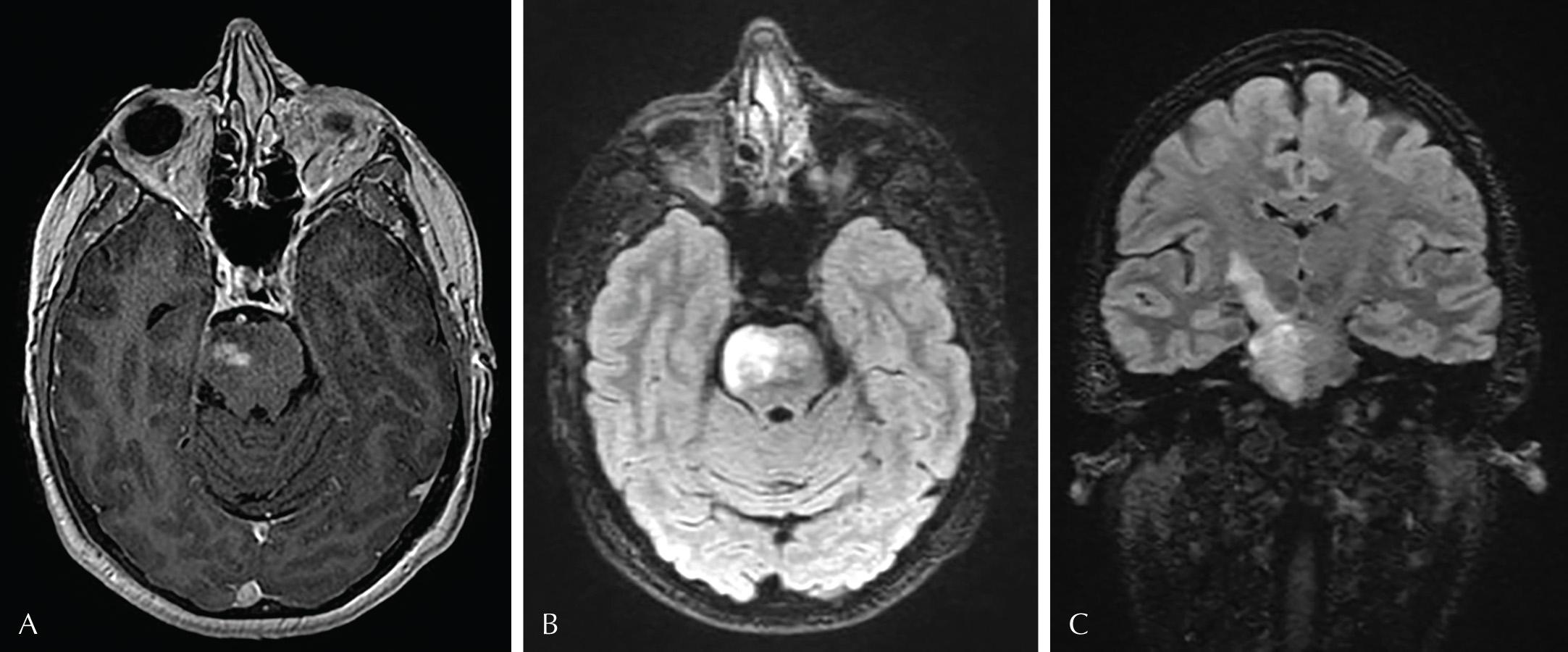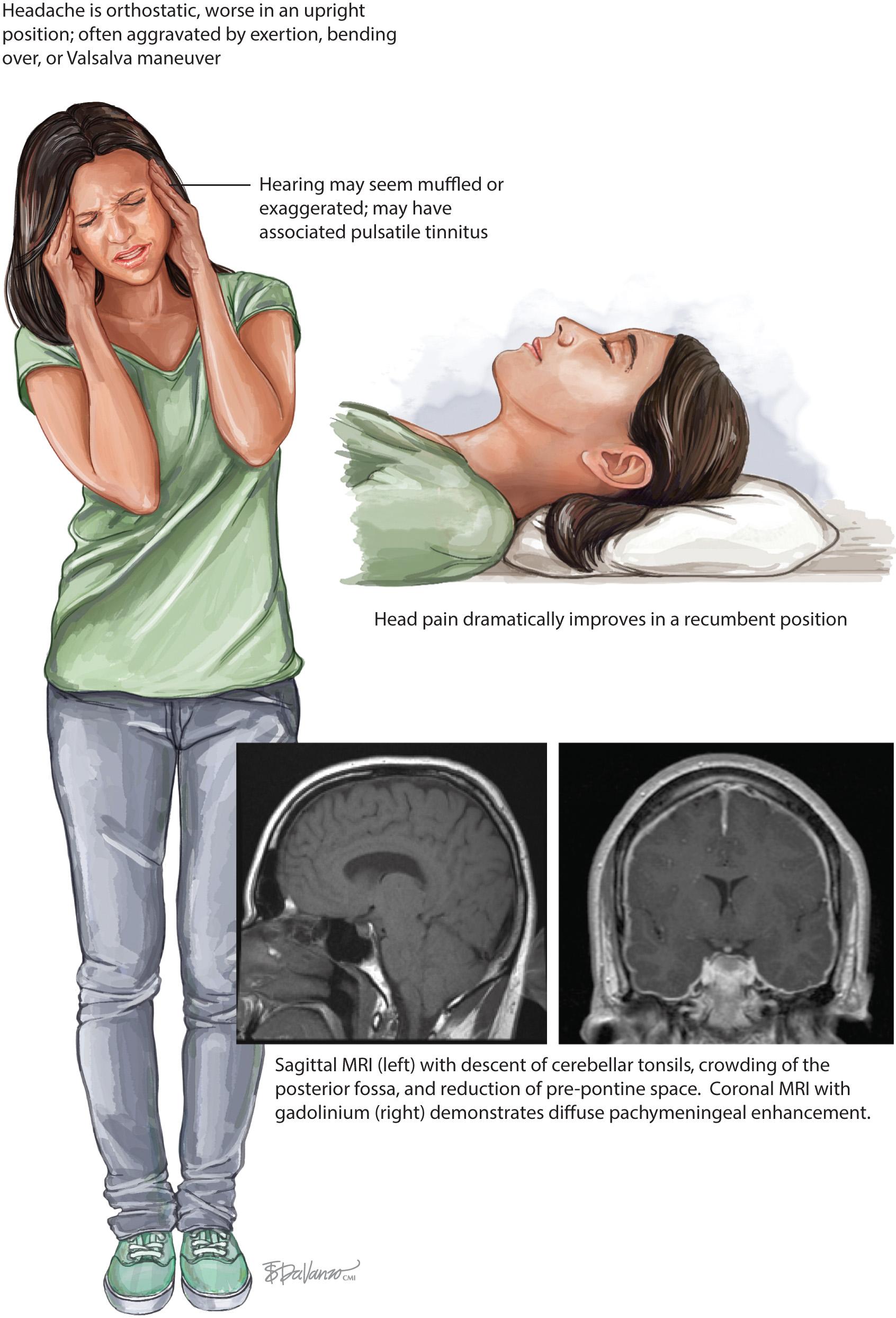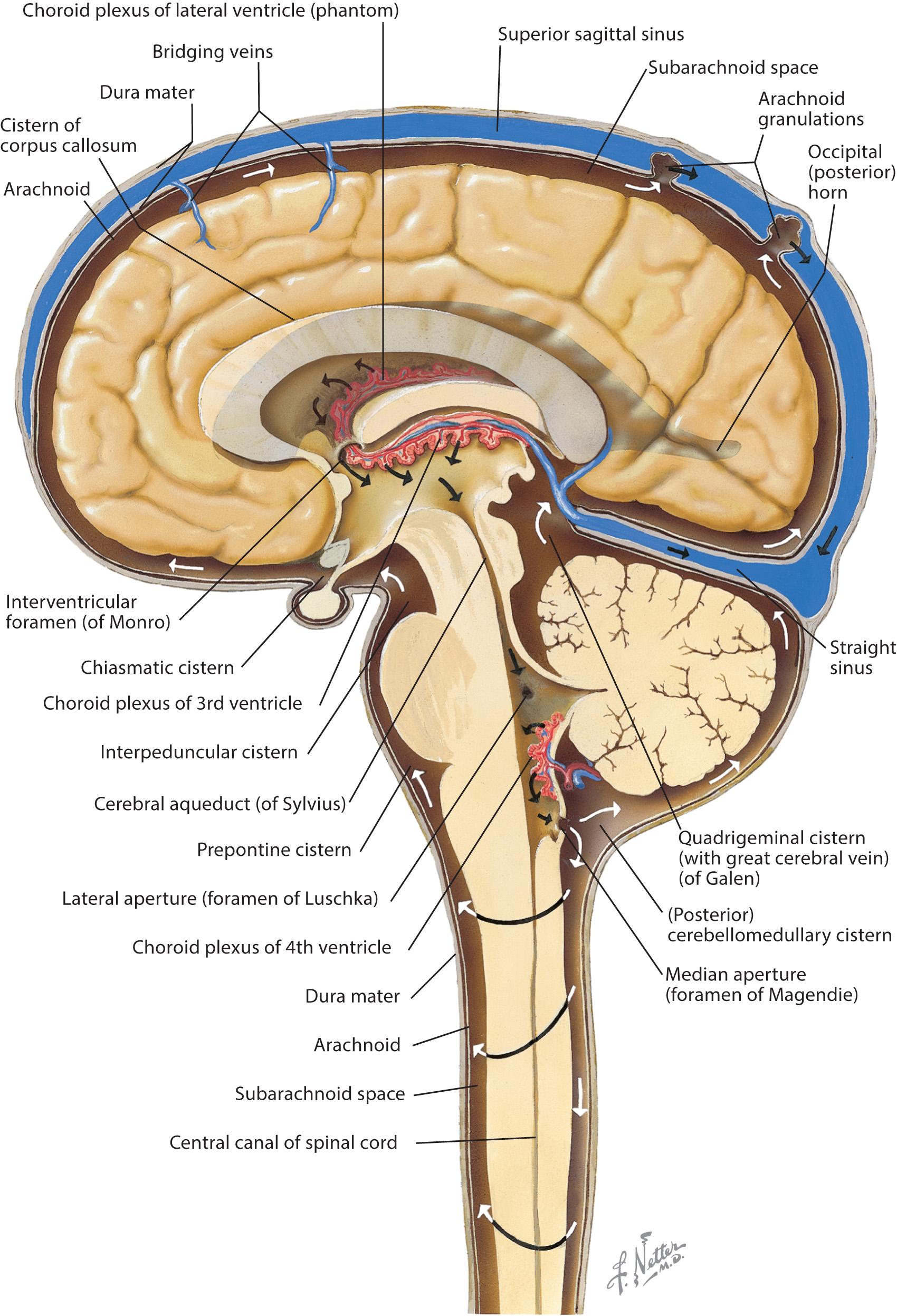Physical Address
304 North Cardinal St.
Dorchester Center, MA 02124
A 45-year-old woman presents to clinic with episodic left-sided weakness, dysarthria, and gait imbalance. The first episode occurred 9 months ago upon awakening and resolved gradually over 2 days. She had no associated headache, visual symptoms, or nausea. She has had three additional episodes of increasing severity over the following 8 months and has had incomplete recovery following the two most recent episodes. She has begun to use a wheelchair for the past 4 weeks, due to persistent left-sided weakness. Ischemic stroke/transient ischemic attack (TIA) was initially suspected. Noncontrast head computed tomography (CT) was negative, and a brain Magnetic resonance imaging/angiography (MRI/A) showed no acute ischemic stroke, demyelinating lesions, and no large vessel occlusion. A screen for hypercoagulability (factor V Leiden, prothrombin gene mutation, protein C, protein S, homocysteine) was performed and was negative. Following the third episode, a repeat brain MRI was performed, which showed areas of enhancement and T2 hyperintensity within the basis pontis ( Fig. 2.1 ). A serum rheumatologic screen (antinuclear antibody, angiotensin converting enzyme, rheumatoid factor, and Anti-Ro/Anti-La antibodies) was negative. Serum C-reactive protein was elevated at 11.9 mg/dL (normal < 6.3). Cervical and thoracic spine imaging were unrevealing, and a body PET/CT revealed a thyroid nodule and multiple FDG-avid hepatic and splenic lesions. Ophthalmologic evaluation including slit lamp was unremarkable. Cerebrospinal fluid (CSF) studies were as follows: white blood cell count 11 per high power field, red blood cell count 5 per high power field, glucose 59 milligrams per deciliter, protein 45 mg/dL, immunoglobulin index 0.42 (normal < 0.6), no oligoclonal bands present. CSF cytology and flow cytometry were negative. Follow-up neuroimaging revealed an increase in the enhancement and T2 hyperintense pontine abnormality. The patient was offered empiric corticosteroids versus diagnostic brain biopsy and referred for neurosurgical consultation.

Comment: This case illustrates a challenging diagnostic quandary, with early presenting symptoms suggestive of cerebrovascular disease but imaging and clinical evolution that did not confirm this suspicion. This unexpected result led to additional diagnostic testing and forced the caregivers over time to reframe the problem more broadly and to investigate both neurologic and systemic infectious, inflammatory, and neoplastic disorders. Ultimately a comprehensive analysis of blood, CSF, and imaging were inconclusive. The patient declined biopsy due to the risk of neurologic morbidity yet had gradual clinical improvement with time and corticosteroids, leading to a presumed diagnosis of chronic lymphocytic inflammation with pontine perivascular enhancement responsive to steroids (aka CLIPPERS).
It cannot be overstated that a careful and skilled neurologic history and physical examination are the cornerstones of the neurologic evaluation (see Chapter 1 ). To successfully navigate a challenging case, these must be completed, synthesized, and reflected upon before ordering tests. The selection of diagnostic testing of all types (serum, cerebrospinal fluid [CSF], imaging, neurophysiology, and tissue studies) must be driven by the unanswered questions that arise from the clinical history and examination findings. To embark on laboratory investigations with an inadequate understanding of the patient's problem or incomplete neurologic examination invites waste and error. This is not to say that there is no role for a heuristic approach, but the best clinicians listen carefully to their patients and modify their diagnostic approach when new information challenges their heuristics.
Hypothesis-driven testing based on a prioritized differential diagnosis is the most effective strategy. It is important to be as familiar as possible with the strengths and limitations of each diagnostic test and to anticipate potential results. When considering a test, some questions to consider include:
Is this the best test to answer my clinical question?
Is there a less invasive, quicker, or less costly testing option?
What is/are the potential result(s) of the test?
How long will it take to get results? For a test with long processing time, will the result still be helpful?
How will the result(s) impact my next steps/recommendations?
Another consideration is whether to acquire tests in series or in parallel. Ordering tests in series is a strategy by which the clinician orders a single or small number of tests and then awaits the results before proceeding to additional testing. This strategy optimizes accuracy and minimizes waste. The clinician may begin with test(s) related to the most likely diagnosis and move in a strategic fashion to test for successively less common possibilities based on each test result as it becomes available. The disadvantage to this approach is that it takes considerably longer to complete a diagnostic evaluation when ordering tests in series. It is most appropriate when there is a highly reliable test that can be obtained and interpreted quickly (such as head CT scanning to evaluate for acute intracranial hemorrhage), or when the pace of illness is subacute to chronic and there is less pressure to make a quick diagnosis, or if there is a highly reliable test that takes a long time to get results or is highly costly (such as genetic testing).
Testing in parallel takes the approach of ordering multiple tests simultaneously. Parallel testing is useful for conditions in which there are numerous potential causes for a clinical condition. For example, a clinician seeing a patient with a sensory neuropathy may identify specific risk factors (such as hyperglycemia or exposure to chemotherapy) but ultimately may not be able to exclude a handful of other potential causes. Rather than scheduling multiple return visits and phlebotomy sessions, one may opt to send a group of tests in parallel to efficiently screen for numerous common causes in a matter of days with a single trip to the lab. The hypercoagulability screen and rheumatologic laboratories in the previous case are also examples of parallel testing. A potential disadvantage to parallel testing is added cost if expensive or extraneous tests are ordered.
Another important factor in ordering clinical tests is the logistical burden and the invasiveness of the test. Clinicians tend to think of diagnostic testing in terms of the ways that it is helpful to us (how reliably a test or tests will achieve the diagnosis). However, this is not the only consideration for patients. The discomfort associated with a blood draw or electromyography (EMG) procedure, claustrophobia in a scanner, procedural risk associated with a biopsy, and individual or cultural beliefs and attitudes about medical care all factor into a patient's willingness to pursue diagnostic testing and influence their “compliance” with our recommendations. It is therefore important when ordering tests to ensure that our patients understand and accept the reasoning for the test and have a realistic picture of what they will experience. This conversation is particularly essential prior to diagnostic lumbar puncture and electrophysiology testing, because patients often have strong perceptions about the discomfort associated with these tests. For biopsies, or other invasive procedures such as ventriculostomy, it is appropriate for the proceduralist to explain the rationale and associated risks of the procedure and to answer any related questions.
A challenging situation that arises with diagnostic testing occurs when patients are convinced that they need a specific test, but the clinician does not agree or favors pursuing an alternative diagnosis. Increasingly, with online medical resources and community- and web-based sharing of information and experiences, patients enter the examination room with an element of “self-diagnosis.” For example, a patient being seen for tingling of the dominant hand may have a history and exam that confirms a diagnosis of carpal tunnel syndrome. The clinician recommends appropriate therapy and potentially EMG testing, yet the patient may be insistent that he or she has a brain MRI because he or she is convinced that a stroke, brain tumor, or multiple sclerosis is the cause for his or her symptoms. These situations required careful listening, skilled redirection, explanation of the clinical evidence to support or refute a diagnosis, reassurance, and confidence. Often it is useful to ask, “Why do you think these symptoms are due to a stroke?” Explicitly addressing, rather than avoiding, these concerns often leads to useful insights. Through this process, clinicians ideally learn more about their patients' values, fears, and communication styles, and patients ultimately come to trust their clinicians' judgment and recommendations.
There is no exact substitute for CSF analysis in many neurologic disorders, such as acute or chronic meningoencephalitis, autoimmune central nervous system (CNS) disorders, and acute and chronic inflammatory demyelinating polyneuropathies. Head CT imaging has a greater than 95% sensitivity in subarachnoid hemorrhage, but there is still a role for CSF analysis in clinically suspected cases with negative head CT, especially when presenting more than 24 hours after symptom onset, because sensitivity of imaging decreases with time.
The widespread availability of CT scanners in acute care settings makes it uncommon for one to perform a lumbar puncture without neuroimaging. Neuroimaging is crucial to confirm that there is no mass lesion for which lumbar drainage of CSF could produce or worsen a herniation syndrome. Specifically, patients with a history of cancer, immunosuppression (human immunodeficiency virus [HIV] or organ transplant), focal neurologic deficits, fever, trauma, or depressed level of consciousness need head imaging prior to the procedure. It may also be necessary to repeat brain imaging prior to lumbar puncture in cases in which there has been a neurologic decline since the previous neuroimaging.
The main risks of lumbar puncture are bleeding or infection (cutaneous or epidural) at the site of puncture, post-lumbar puncture (LP) headache, or nerve root injury. Use of the atraumatic “Sprotte” spinal needle is associated with a significantly lower incidence of post-LP headache than cutting spinal needles (1%–2% vs. 15%–20%, respectively) ( Fig. 2.2 ). Cellulitis involving the lumbar puncture site or suspected epidural abscess is an absolute contraindication to lumbar puncture. Coagulopathy is a relative contraindication due to potentially increased risk for hemorrhagic complications, although there is no high-quality evidence to quantify the risk, and specific coagulation parameters under which lumbar puncture is acceptably safe are not well established. It is best to perform the procedure after all antiplatelet and anticoagulant medications have been discontinued long enough that normal coagulation may occur.

CSF is produced at a rate of 0.2–0.7 mL/min, or 600–700 mL/day, with an average total circulating volume in adults of 125–150 mL. The majority of CSF is produced by the choroid plexus within the lateral ventricles, but approximately 80% of CSF volume is outside the ventricular system ( Fig. 2.3 ). A typical LP involves removal of 10–30 mL of fluid, which the body replaces under normal physiologic conditions in 1–3 hours.

Personal protective equipment, sterile technique, and local anesthesia minimize the risk of complications for the patient and the proceduralist. The lateral decubitus position tends to be most comfortable for the patient and allows for easier measurement of CSF opening pressure. LP may be performed in the seated position if it is difficult to identify landmarks in the lateral decubitus position or if the patient has severe orthopnea and cannot lie flat for the duration of the procedure. However, once the needle enters the CSF space, the seated patient must then be transitioned onto his or her side if opening pressure measurements are desired. Normal CSF opening pressure in the lateral decubitus position with legs straightened is between 8 and 15 cm H 2 O and may be slightly higher in intubated patients.
Become a Clinical Tree membership for Full access and enjoy Unlimited articles
If you are a member. Log in here